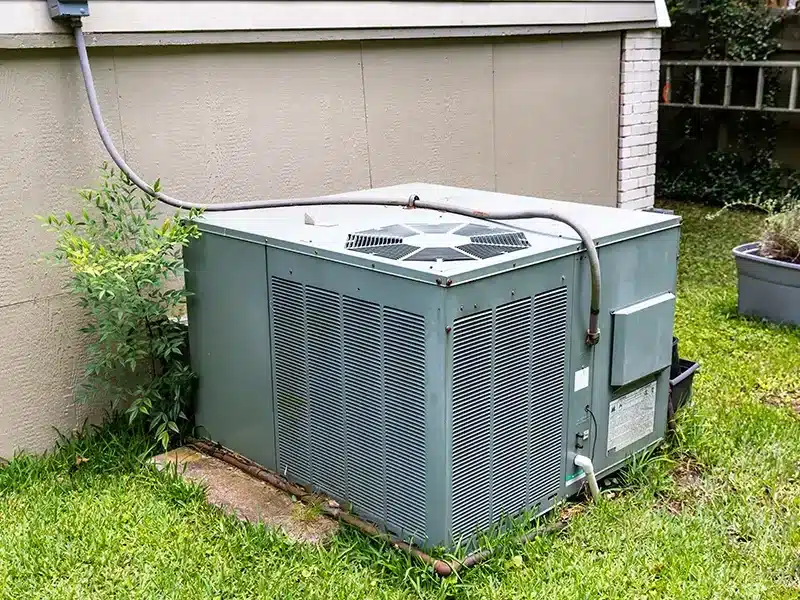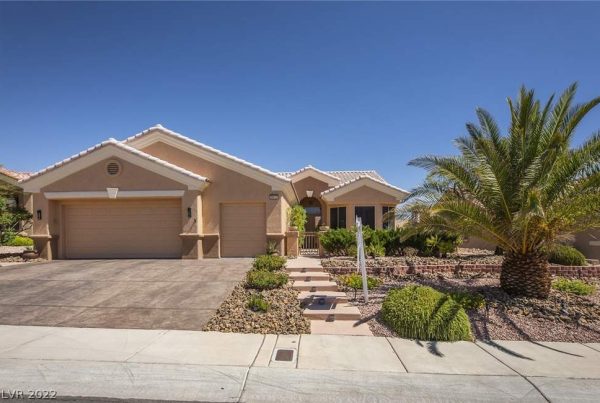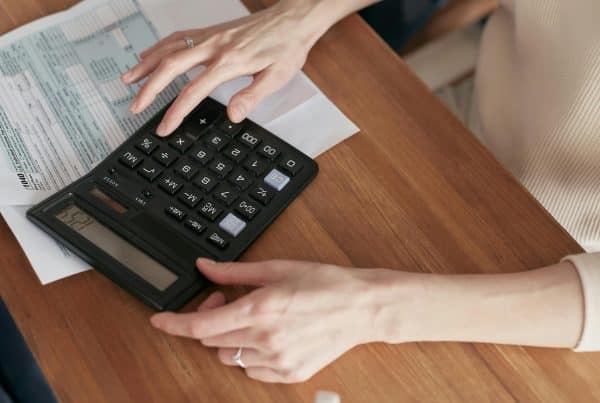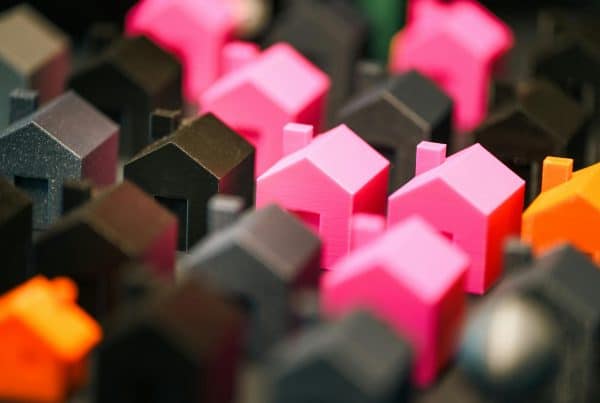What Las Vegas Homeowners Need to Know
Your air conditioner runs nearly year-round in Las Vegas. It keeps you comfortable through brutal summers and mild winters. But it might also be circulating mold, bacteria, and dust throughout your home.
Fewer than 10% of homes have air filtration capable of preventing microbial growth in HVAC systems. That means nine out of ten homes are at risk. Mold and bacteria contamination can trigger allergies, worsen asthma, and cause respiratory problems. Some molds even produce toxins linked to cancer.
Living in the desert doesn’t protect you. Your closed windows and constantly running AC create the perfect conditions for contamination.
Why Desert Air Conditioning Gets Contaminated
Dry outdoor air doesn’t mean dry HVAC components.
Every time warm air passes over your AC’s cold coils, condensation forms. Water pools in drain pans and lines where mold and bacteria thrive. Las Vegas air carries fine sand and construction debris that coats your coils and ducts when weak filters fail to stop it.
You rarely open windows during summer. Whatever circulates inside your home stays inside. Contaminants recirculate constantly through your ductwork.
The combination of condensation, dust, and closed-loop air creates contamination even in the driest climate.
Start With a Better Filter
Most homeowners use cheap fiberglass panel filters rated MERV 3 or 4.
These filters stop large particles like visible dust. They do nothing to block mold spores or bacteria. The microscopic contaminants pass straight through and colonize your system.
Switch to pleated filters rated MERV 8 to 10.
You’ll find them at Home Depot, Lowe’s, or Ace Hardware for $5 to $10. Don’t worry about brand names. Focus on the MERV rating clearly marked on the package.
Proper fit matters more than brand. Measure your filter compartment before shopping. The best filter in the world won’t improve air quality if air flows around it through gaps. The compartment door must close properly with the filter inside.
Skip “electrostatic” washable filters despite manufacturer claims. There’s no effective way to clean them. They lose effectiveness quickly and can’t match the performance of quality pleated filters.
Replace filters every 30 to 45 days during Las Vegas summers. Long run times and desert dust clog them fast. Switch to every three months during cooler seasons when the system runs less.
One trade-off: Switching from MERV 3 to MERV 8 reduces airflow by up to 10%. That can increase your cooling and heating bills slightly. Keeping filters clean minimizes this impact. Dirty filters force your system to work much harder than the slight restriction from a clean higher-rated filter.
Clean Your Existing System
Installing a better filter today doesn’t fix yesterday’s problems.
If you’ve used low-rated filters in the past, mold and bacteria are probably already growing on your blower and coil. These components sit after the filter in your system. A new filter can’t kill existing contamination or stop spores from spreading through your home.
The only reliable solution is professional duct cleaning by a NADCA-certified technician.
Contact the National Air Duct Cleaners Association at 856-380-6810 or www.nadca.com to find legitimate services in Las Vegas. The duct cleaning industry is full of scammers. NADCA members are usually trustworthy.
Expect to pay $900 to $1,200 for an average Las Vegas home. Any company promising significantly lower prices will either do sloppy work or pad your bill with surprise charges during the job.
Before signing a contract, confirm in writing that the service includes cleaning your blower and coil. Some companies clean only the ducts and ignore these critical components where contamination grows.
Schedule cleaning every four to five years.
Ask the technician to check three things during the service:
- The drain line for clogs or slime buildup
- The coil for corrosion or visible mold
- Contactors and capacitors for wear before summer heat arrives
Don’t wait if you see water stains or smell mildew near vents. Moisture inside the system spreads contamination fast.
Maintain Your Outdoor Unit
Las Vegas dust, construction debris, and windblown leaves block airflow through your condenser. Reduced airflow cuts efficiency and drives up cooling costs.
Clean your outdoor unit before summer temperatures hit.
Turn off power at the disconnect box. Never work on the unit with power connected.
Hose off the condenser coil from the inside out using light water pressure. Avoid pressure washers. They bend the delicate fins and can cause refrigerant leaks.
Apply coil cleaner made specifically for HVAC systems. Follow the product instructions and rinse thoroughly. Soap residue left on metal coils causes corrosion. This is particularly damaging on newer black-coated condenser coils.
Keep at least two feet of clearance around the unit for proper airflow.
Keep Your Drain Line Clear
Even in the desert, your air conditioner creates moisture. A clogged drain line lets bacteria grow and can flood the drain pan.
Pour one cup of white vinegar into the drain line every two to three months. The mild acid kills bacteria and prevents buildup.
If the line is already draining slowly, flush it gently with water. Avoid blowing compressed air into the drain unless you know the system layout. You can damage fittings and connections.
Las Vegas-Specific Risks to Watch
After dust storms: Replace your filter immediately. Major dust events overwhelm even good filters and coat everything downstream.
Attic air handlers: Check the secondary drain pan regularly. A clog can leak through your ceiling before you notice a problem.
Refrigerant line insulation: The intense Las Vegas sun dries and cracks foam insulation. Replace it if it’s brittle or missing. Exposed lines waste energy and reduce system efficiency.
Evaporative coolers: If you use a swamp cooler, clean the pads every season. Hard water leaves mineral deposits that reduce effectiveness and create musty odors.
Evaluate Upgrades Carefully
Expensive air purification systems often disappoint. Some deliver genuine improvements. Others waste money.
MERV 10 to 13 whole-house filters do an excellent job trapping particulates and preventing microbial growth. The problem is they’re too deep to fit standard residential filter compartments.
You’ll need to retrofit your system with a larger filter holder. Expect to pay $700 to $1,000 for installation. Replacement filters cost $40 to $60 and last around six months.
This is probably the most cost-effective high-end filtration option. The Honeywell F100 Whole-House Media Air Cleaner is one example that accommodates these higher-rated filters.
HEPA whole-house filters have impressive MERV ratings of 16 and up. Residential versions are “bypass filters” that subject only a small percentage of air to extreme filtration on each pass. They remove particulates well but do little to prevent mold and bacteria growth inside your HVAC system.
Not worth the $2,000 to $3,000 cost unless someone in your home has severe allergies to pollen or pet dander.
Electronic filters attach an electrical charge to particles and collect them on metal plates. They must be cleaned at least monthly to remain effective. Few homeowners maintain them properly. Every residential electronic filter I’ve seen stops working properly within a year.
Don’t bother with these systems.
UV light air purifiers supposedly kill germs by irradiating air passing through your HVAC system. The technology works well in hospitals. Residential UV purifiers are so much less powerful they’re essentially worthless.
If you do install UV lights near your coil, replace bulbs annually. Most lose effectiveness long before they burn out.
Ozone-based purifiers should be avoided entirely. They lose effectiveness fast and can irritate your lungs.
Portable air cleaners effectively remove particulates like pollen from individual rooms. They won’t prevent mold and bacteria in your central system.
Choose models with a Clean Air Delivery Rate (CADR) of at least 100. Avoid electronic filters that produce ozone. Check the decibel rating before buying. You don’t want anything much over 50 decibels. Noisy portable filters are a common complaint.
These work well for bedrooms or home offices where someone spends significant time.
Hot water-circulating heating systems reduce respiratory problems by roughly 50% compared to forced-air heating. Making this change in an existing home could cost tens of thousands of dollars.
Only consider this option if you’re remodeling or building a new home and a family member suffers from serious respiratory problems.
Test Your Air Quality Simply
Wear an N95 filter mask indoors for a few days. You can buy them at home improvement stores or drugstores for about $2 each.
If the mask helps you breathe easier, your air conditioning system is probably contaminating your home. Better filtration will likely help.
Your Action Plan
This week:
- Measure your current filter compartment
- Buy MERV 8 to 10 pleated filters that fit properly
- Install a new filter
- Pour one cup of vinegar into your drain line
Before summer:
- Clean your outdoor condenser unit
- Check for water stains or mildew smells near vents
- Replace your filter if it’s been more than 45 days
Every 30 to 45 days in summer (90 days otherwise):
- Replace your air filter
- Set phone reminders so you don’t forget
Every two to three months:
- Pour vinegar into your drain line
Every four to five years:
- Schedule professional duct cleaning with a NADCA-certified company
- Verify in writing that blower and coil cleaning are included
- Budget around $900 to $1,200
After major dust storms:
- Replace your filter immediately regardless of when you last changed it
What Actually Matters
Your air conditioner should cool your home, not contaminate it.
Most air quality problems come down to three issues: inadequate filtration, dirty system components, and poor maintenance. Fixing these doesn’t require expensive upgrades or complicated technology.
Use filters rated MERV 8 to 10. Change them frequently. Keep your system clean. Clear your drain line regularly.
Las Vegas air is dry, dusty, and full of construction debris. Your AC works harder and runs longer than systems in most other climates. A little maintenance and the right filter protect your health, extend your system’s life, and keep your energy bills under control.
Frequently Asked Questions
What MERV rating should I use in Las Vegas? MERV 8 to 10 is the sweet spot for most Las Vegas homes. MERV 8 provides good protection against mold and bacteria without dramatically restricting airflow. MERV 10 offers better filtration if someone in your home has allergies, but check that your system can handle the slightly reduced airflow.
How often should I really change my AC filter in the desert? Every 30 to 45 days during summer when your system runs constantly. Every three months during cooler seasons. Replace immediately after major dust storms regardless of when you last changed it. Las Vegas dust and sand clog filters much faster than in humid climates.
Is professional duct cleaning worth the cost? Yes, if you’ve been using low-rated filters (MERV 3 to 4) for years. Mold and bacteria are probably growing on your blower and coil. Installing better filters now won’t kill existing contamination. Expect to pay $900 to $1,200 for a legitimate NADCA-certified service. Schedule cleaning every four to five years.
Can I clean my own ducts to save money? You can’t effectively clean the blower and coil without proper equipment and training. These components sit after the filter and are where most contamination grows. DIY duct cleaning only addresses the ductwork itself and misses the critical components. Use a professional for thorough cleaning.
Do electronic air purifiers work? Not in residential applications. They must be cleaned monthly to remain effective. Few homeowners maintain them properly. They also often produce ozone, which irritates lungs. Every residential electronic filter I’ve inspected stops functioning properly within a year.
Are UV lights in my AC worth installing? UV lights work well in hospitals and large industrial systems. Residential versions are much less powerful and essentially worthless for whole-house air purification. If you already have them installed, replace the bulbs annually. They lose effectiveness long before burning out.
Should I upgrade to a HEPA filter system? Probably not. Whole-house HEPA systems cost $2,000 to $3,000 but use “bypass” technology that filters only a small percentage of air on each pass. They remove particulates well but do little to prevent mold and bacteria in your HVAC system. Only consider if someone has severe allergies to pollen or pet dander.
What’s the best portable air cleaner for Las Vegas homes? Choose a model with a Clean Air Delivery Rate (CADR) of at least 100 and a noise level under 50 decibels. Avoid models with electronic filters that produce ozone. Portable cleaners work well for bedrooms or offices but won’t prevent contamination in your central AC system.
How do I know if my air conditioner has mold? Look for water stains near vents or musty smells when the system runs. Wear an N95 mask indoors for a few days. If you breathe easier with the mask on, your system is probably contaminated. Professional inspection during duct cleaning can confirm mold growth on components.
Why does my AC create condensation in the desert? Condensation forms whenever warm air passes over cold coils regardless of outdoor humidity. Your AC’s evaporator coil is cold. Indoor air is warm. Water forms on the coils and drains into the pan and drain line. Even in Las Vegas, this creates enough moisture for mold and bacteria to grow if not properly managed.






